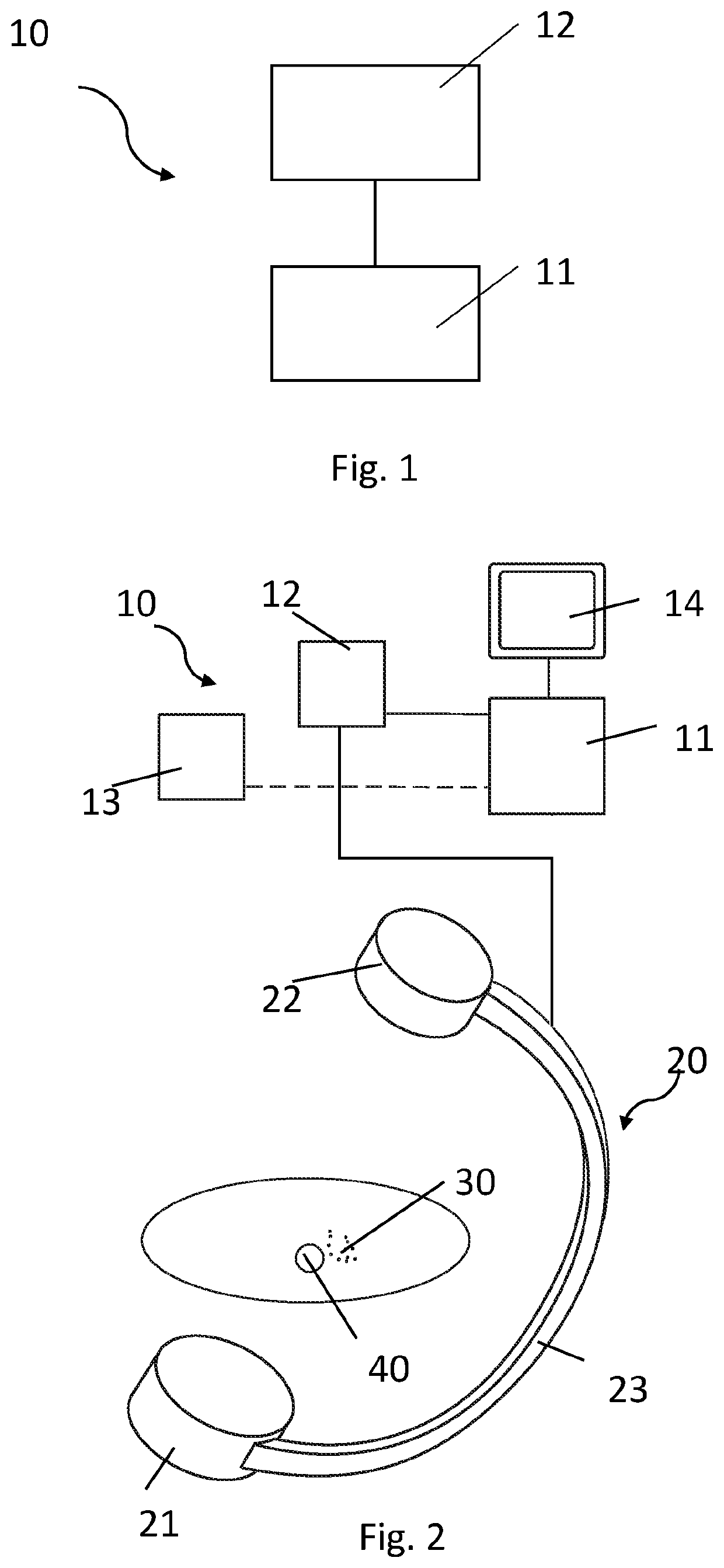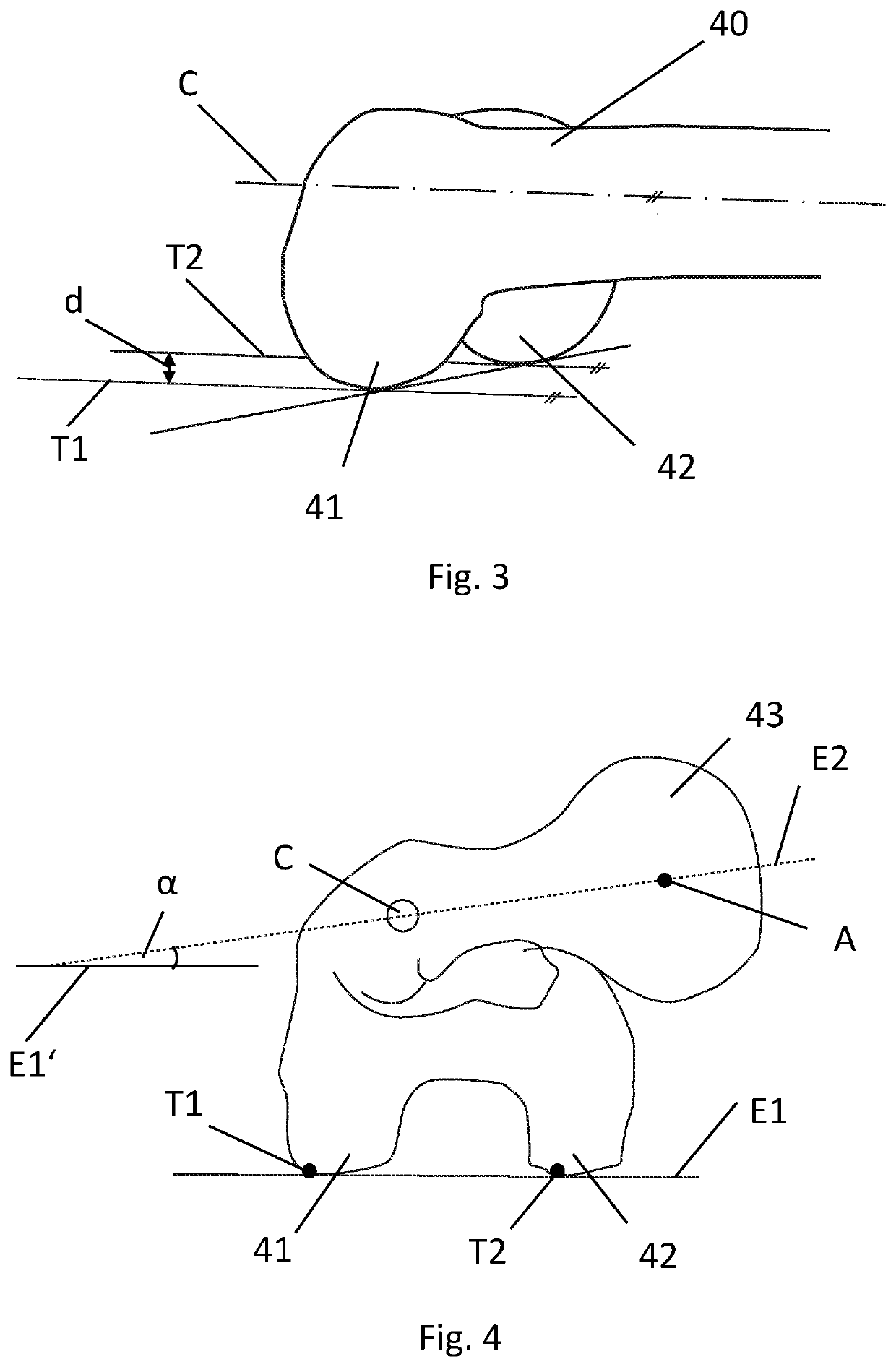Device for determining the anteversion angle
a technology of anteversion angle and device, which is applied in the direction of instruments, prosthesis, image enhancement, etc., to achieve the effect of reducing radiation amount and high benefi
- Summary
- Abstract
- Description
- Claims
- Application Information
AI Technical Summary
Benefits of technology
Problems solved by technology
Method used
Image
Examples
Embodiment Construction
[0054]FIG. 1 illustrates an exemplary embodiment of a device 10 for determining the anteversion angle of a femoral shaft. The device 10 comprises a processing unit 11 and a provision unit 12. The provision unit 12 is configured to provide image data of the femur of which the anteversion angle should be determined. The processing unit 11 is configured to determine a longitudinal shaft axis through the femoral shaft based on the provided image data of the provision unit 12. The processing unit 11 further is configured to determine at least two landmarks of the femur and to place tangents through each one of the landmarks. The landmarks may be the condyles and / or the lowest point of the condyles. The processing unit 11 may determine the landmarks, e.g. the lowest point of the condyles, the femur head and / or the shaft axis through the femoral shaft, automatically, by the means of image recognition, image processing and / or feature extraction. Thus, the processing unit 11 analyses the pro...
PUM
 Login to View More
Login to View More Abstract
Description
Claims
Application Information
 Login to View More
Login to View More - R&D
- Intellectual Property
- Life Sciences
- Materials
- Tech Scout
- Unparalleled Data Quality
- Higher Quality Content
- 60% Fewer Hallucinations
Browse by: Latest US Patents, China's latest patents, Technical Efficacy Thesaurus, Application Domain, Technology Topic, Popular Technical Reports.
© 2025 PatSnap. All rights reserved.Legal|Privacy policy|Modern Slavery Act Transparency Statement|Sitemap|About US| Contact US: help@patsnap.com



